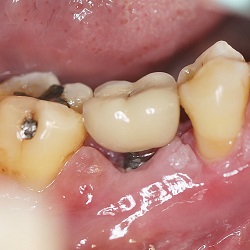A beautiful smile is one of the principal components of beauty. The appearance of your teeth has a remarkable effect on your self-esteem and confidence. At the same time, it makes you look more attractive and younger.
If you don’t feel comfortable smiling because of uneven spaces between your teeth, it is no longer an insoluble problem. Thanks to modern cosmetic dentistry, you can enjoy a beautiful smile while greeting other people. We are here to help you make a change and enjoy your life.
Dental veneering is an aesthetic dental procedure and a state-of-the-art solution through which you can enjoy pearly-white and healthy teeth. are thin, wafer, tooth-colored, and custom-made materials that are attached to the front of your teeth and address a variety of dental problems. Several dental problems such as goofy, misshaped, stained, and crooked teeth can be treated using dental veneers.
Different types of dental veneers
Composite and porcelain veneers are the most common types of veneers. Although both methods serve the same purpose, their main difference is in the material used. Composite veneers are made of resin which closely resembles natural tooth in color. Porcelain veneers, on the other hand, are from porcelain and are usually made in labs.
It does not matter which option you choose. Both types of veneers make a shell that veil any damage or discoloration. By using veneers, experienced cosmetic dentists can give you a Hollywood smile. However, depending on your budget, purpose, and the extent of the damage, you may have a different choice.
Here, we go into details about different dental veneers, which help you understand the differences between composite and porcelain veneers and the pros and cons of each.
Composite veneers
Advantages
The first positive point about composite veneers is their price. It is a quick procedure, whose reasonable price seems to be a deciding factor for patients. It has been estimated that porcelain veneers price is twice as high as that of composite veneers.
One-day treatment is another chief benefit. It requires no dental resizing in advance or laboratory working. The ready-to-use tooth-shaped chips are directly applied on the surface of patients’ teeth. This kind of veneer is also called direct composite bonding.
Another advantage of composite veneers is that it requires minimum reshaping of your teeth or prep work. As a result, the procedure is reversible if patients wish to remove them. In other words, whenever it requires, the composite material could be removed or replaced because it makes no changes in the shape of your teeth.
It is also the softest option for those who suffer from small cracks or tiny deficiencies. Offering an affordable price and quick procedure, composite veneers are a great alternative to hide dental problems and protect the rest of the teeth from damage.
Disadvantages
Regarding the fact that composite veneers are porous, they are susceptible to stain. It places considerable demands on the patients to stick to a diet with less stain-causing food and protect their teeth after getting the veneers.
Compared to porcelain veneers, composite bonding has shorter longevity.
It lasts for 5 or 7 years, and then, they usually need to be replaced or repaired.
Composite veneers are not a viable alternative for those who suffer from serious deficiencies. It is an alternative to those who may look for minor cosmetic dentistry.
Composite masks only slight dental misalignments, discoloration and chipping, and it fails to correct serious problems or fill big spaces between teeth. In severe cases, cosmetic dentists recommend other types of veneers
Porcelain veneers
Advantages
Compared to composite resin, porcelain veneers are more durable thanks to stronger material used in them. On average, the estimated life span for porcelain veneers is 10 to 15 years because of the high quality and strong materials.
From the aesthetic aspect, porcelain is more natural due to realistic translucent material.
Another benefit of porcelain is that it is a good choice for all cases. No matter you are suffering from severe imperfections or minor problems. It is a viable option for all kinds of patients.
Disadvantages
If porcelain veneers get damaged, the shells should be replaced while a broken or chipped composite veneer could be repaired.
Given the devoted time, material used, and required expertise for placing porcelain veneers, it charges you much more than composite bonding. Another downside is time. Depending on whether your dentist uses cutting-edge equipment or not, this technique could last at least two visits.
Porcelain vs. composite veneers in a nutshell
Deciding on which technique suits you comes down to a different set of criteria. After careful consideration of the pros and cons of dental veneers, you could weigh up each type to come to a reasonable conclusion. The following table gives you a head start on a quick comparison between the two types of veneers:
| Composite veneers | Porcelain veneers |
| Moderate price | Expensive |
| One-day treatment | At least two appointments |
| Reversible | Not reversible |
| May fall off or break | More durable |
| Directly applied | Requires lab working |
| Hide minor problems | Hide most problems |
| Susceptible to stains | Resistent to stains |
If you are still unsure which method works best for you, do not worry! Our consultants at AriaMedTour help you make a wise decision with a free online consultation.














